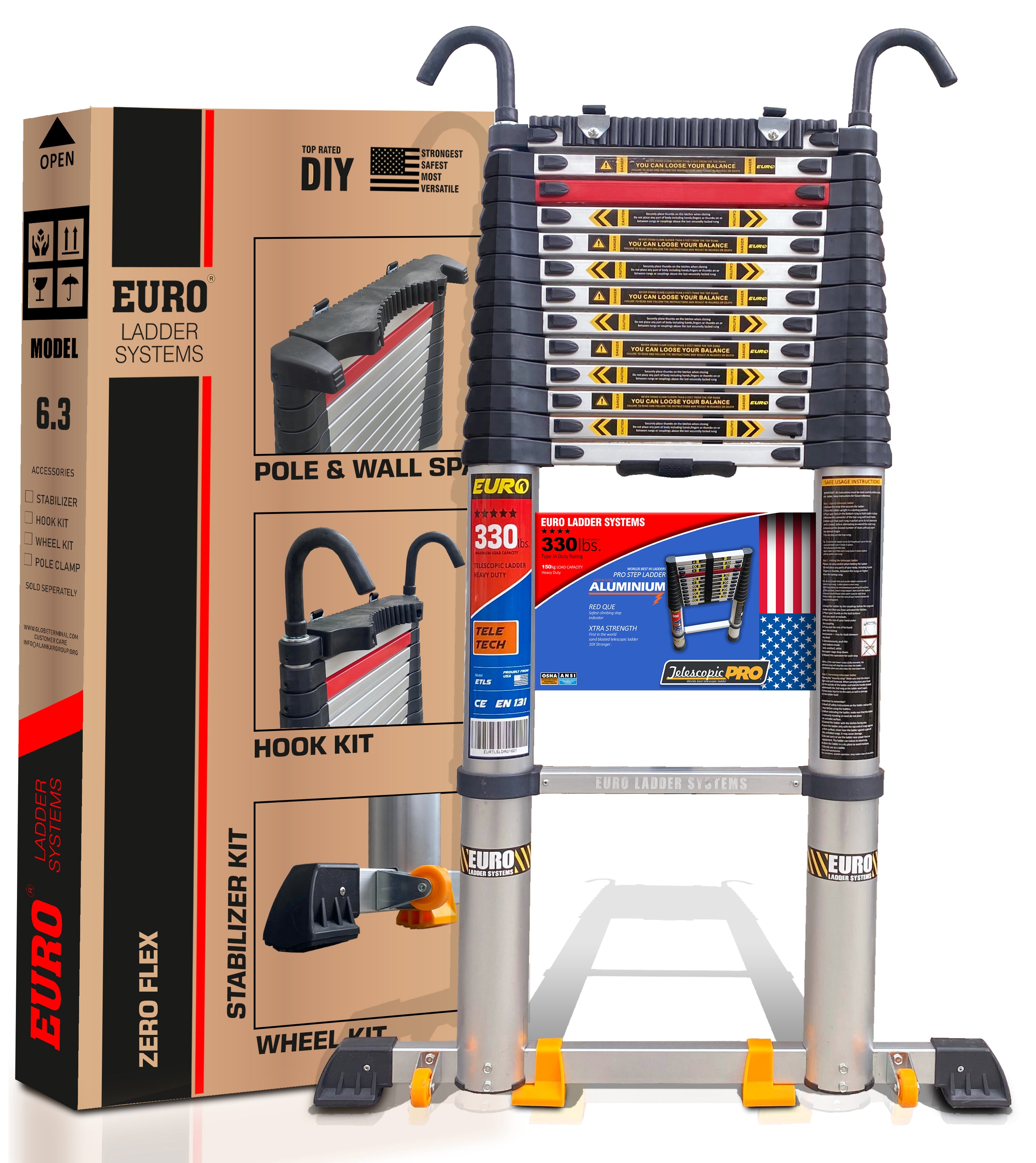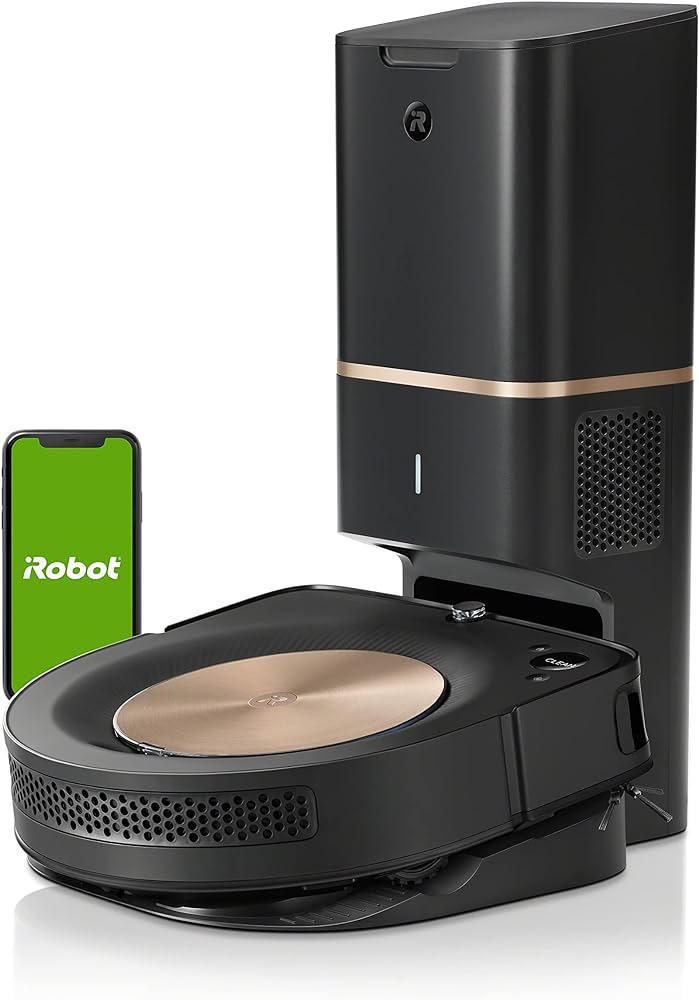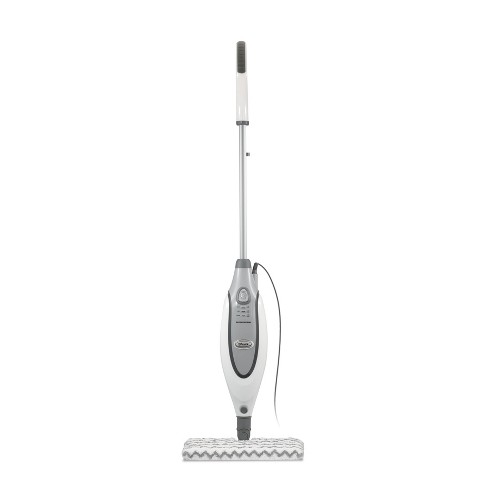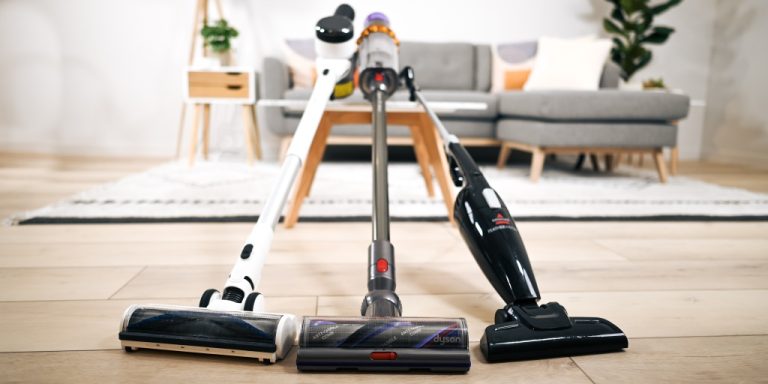What is Telescopic Ladder?
A telescopic ladder is an extendable ladder that collapses down for easy storage. It typically features overlapping sections that slide in and out to adjust the ladder’s height.
Telescopic ladders are the go-to choice for convenience and space-saving in both household and professional settings. Their compact design allows for straightforward transportation in the trunk of a car, making them ideal for tasks that require mobility, such as painting, cleaning gutters, or performing home maintenance.
Durability and safety are critical, so these ladders often come with locking mechanisms and anti-slip feet to ensure a secure setup. Lightweight materials like aluminum grant ease of handling without compromising on strength. When fully extended, they reach varying heights, catering to different user needs. Telescopic ladders meet the demands of versatility and functionality, embodying a practical solution for working at heights.
The Rise Of Telescopic Ladders
Ladders have transformed dramatically with the advent of the telescopic design. These modern ladders are easy to store and carry, making them a top choice for professionals and DIY enthusiasts alike.
Compact Design Revolution
The compact nature of a telescopic ladder cannot be overstated. Unlike bulky traditional ladders, these innovative tools collapse to a fraction of their full height. Here’s what sets them apart:
- Space-saving: Fits into small spaces like car trunks or closets.
- Lightweight: Easy to move from job to job without strain.
- Adjustable height: Ensures the right size for any task.
Comparing Traditional And Telescopic Ladders
Differentiating between traditional and telescopic ladders can help you choose the right one.
| Feature | Traditional Ladder | Telescopic Ladder |
|---|---|---|
| Size when stored | Large and unchangeable | Compact and adjustable |
| Portability | Difficult to move | Easy to transport |
| Weight | Usually heavy | Often lightweight |
| Usability | Limited to fixed heights | Height adjusts to need |
Working Principles Of Telescopic Ladders
Telescopic ladders are innovative tools that make reaching heights both easy and safe. They work on principles of compactness and extendibility, which are essential for various tasks. Whether for home use or professional jobs, understanding the working principles of these ladders ensures optimal utilization.
Mechanism Of Extension And Retraction
The core feature of telescopic ladders is their ability to extend and retract. Each ladder consists of a series of tubular sections. These sections slide in and out, one within another. Users pull up the rungs to extend the ladder to the desired height. For retraction, the user collapses the ladder downwards. This simple push and pull mechanism makes the ladder extremely versatile.
- Extension: Pull the rungs upwards.
- Locking: Each section snaps into place automatically.
- Retraction: Unlock and press the buttons, then collapse.
Safety Features And Locking Systems
To ensure safety, telescopic ladders have built-in locking systems. These locks secure each section when fully extended. They prevent the ladder from collapsing unexpectedly.
| Feature | Description |
|---|---|
| Auto-locking Mechanism | Locks each section when extended |
| Non-slip End Caps | Provides stability and grip |
| Indicator Windows | Shows if rungs are locked |
Safety is further enhanced with non-slip end caps on the ladder feet. Indicator windows also provide a visual confirmation that the ladder is locked and safe to climb. These features maintain the ladder’s stability and user’s confidence while at height.
Materials And Durability
Materials and Durability are crucial aspects to consider when delving into the world of telescopic ladders. These innovative devices must possess the strength to support weight and the resilience to last through various conditions. Understanding the composition and maintenance needs of these ladders can ensure safety and longevity.
Common Materials Used
Telescopic ladders boast a range of materials catering to strength and lightweight needs. Let’s explore the most prevalent materials:
- Aluminum: Celebrated for its lightness and strength, aluminum is a common choice for portable ladders.
- Fiberglass: This material offers electrical insulation, perfect for electricians needing non-conductive equipment.
- Steel: Known for its robust nature, steel ladders support heavier loads but at the cost of increased weight.
Ensuring Longevity Through Maintenance
A well-maintained telescopic ladder can serve you for years. Follow these simple steps to preserve the ladder’s functionality:
- Clean Regularly: Remove debris and dirt after each use to prevent mechanism jams.
- Inspect for Damage: Look for dents or bends that could undermine the ladder’s integrity.
- Store Correctly: Keep your ladder in a dry, sheltered area to avoid corrosion and weathering.
- Lubricate Moving Parts: Apply silicone-based lubricants to maintain smooth operations.

Credit: www.ladderterminal.com
Suitability And Versatility
Telescopic ladders are a modern solution for reaching those out-of-the-way places with ease and safety. They are suitable for a variety of tasks, blending flexibility with functionality. Whether you’re a DIY enthusiast, a professional tradesperson, or simply looking to do some home maintenance, a telescopic ladder can be your go-to tool. Its versatile design allows for compact storage and easy transportation, all while providing the necessary height when extended.
Indoor Use Versus Outdoor Use
Telescopic ladders adapt to both indoor and outdoor environments. Indoors, their compact nature shines as they can navigate narrow spaces and extend to reach high ceilings or shelves. Outdoors, these ladders prove equally capable, providing stable support for tasks like gutter cleaning or exterior home repairs. Their rugged construction withstands various weather conditions, ensuring long-lasting performance.
Multiple Configurations And Usages
The design of telescopic ladders enables multiple configurations to suit different requirements:
- Adjustable Height: Select the exact height you need, saving time and effort.
- Versatile Angles: Position the ladder at various angles to work around obstacles.
- Multifunctional: Use as a straight ladder or transform into a step-ladder for tight spaces.
With these configurations, the telescopic ladder serves a range of uses:
| Configuration | Usage Scenario |
|---|---|
| Fully Extended | Cleaning gutters, installing lights |
| Medium Extension | Painting walls, reaching medium height shelves |
| Step-Ladder Mode | Interior decorating, close-quarter tasks |
Buying The Right Telescopic Ladder
Imagine reaching the top shelf or cleaning gutters with ease. A telescopic ladder makes it possible. It extends rung by rung, locks into place, and collapses after use. Choosing the right telescopic ladder involves considering key features, safety certifications, and personal needs. Below, explore the must-haves before making a purchase.
Key Features To Look For
Sturdy construction and durability top the list of essentials. Aluminum is a popular choice; it’s lightweight and strong. Check the maximum height and weight capacity to ensure it suits your tasks. Look for a ladder with non-slip feet and rungs for a solid grip. Convenience adds value; seek a ladder with carry straps or a storage bag. An integrated locking mechanism provides peace of mind with every step.
| Feature | Benefit |
|---|---|
| Lightweight Aluminum | Easy to move and durable |
| Non-slip Design | Safe and stable use |
| Locking Mechanism | Secure extension |
| Carry Straps | Portable and convenient |
Safety Certifications And Standards
Safety is paramount. Certified ladders meet rigorous standards. Look for ANSI, OSHA, or EN131 labels. ANSI (American National Standards Institute) and OSHA (Occupational Safety and Health Administration) are predominant in the USA. EN131 is a European standard recognized globally. These show your ladder has passed tests for weight limits, stability, and material quality.
- ANSI – USA standard for safety
- OSHA – Ensures occupational safety
- EN131 – European testing for global use

Credit: www.amazon.com
Pro Tips For Telescopic Ladder Use
Pro Tips for Telescopic Ladder Use are essential for safety and efficiency. Telescopic ladders provide a versatile tool for reaching heights. Yet, improper use can lead to accidents. These tips ensure that you use your telescopic ladder correctly.
Best Practices For Setup And Take Down
Setting up and taking down your telescopic ladder is a breeze with these best practices:
- Choose a firm, level surface to prevent wobbling.
- Extend the ladder slowly, ensuring each rung clicks securely.
- Ensure it’s fully extended before climbing.
- Lock the mechanisms to avoid collapse.
- Use the one-handed test – if it wobbles, find a better spot.
- For taking down, release the rungs from the bottom up, preventing pinched fingers.
- Store in a cool, dry place to avoid wear and tear.
Avoiding Common Mishaps
To stay safe, here’s what to dodge:
| Mishap | How to Avoid |
|---|---|
| Overreaching | Stay centered. Keep your waist within the ladder’s side rails. |
| Speedy setup or collapse | Take it slow. Rushing increases risk. |
| Using damaged ladders | Inspect before use. Look for damage or loose parts. |
| Ignoring weight limits | Check the ladder’s max load. Don’t exceed it. |

Credit: www.ebay.com
Frequently Asked Questions On What Is Telescopic Ladder?
What Is A Telescopic Ladder Used For?
Telescopic ladders are versatile tools designed for both professionals and DIY enthusiasts. They’re used for reaching high places and are favored for their portability and compact storage capabilities. Ideal for tasks like painting, window cleaning, or changing light bulbs, their adjustable height makes them suitable for various indoor and outdoor jobs.
How Does A Telescopic Ladder Work?
A telescopic ladder extends step by step to desired heights and locks securely into place. It operates through a series of nested sections that slide out and fixate with a locking mechanism. Collapsing them is just as simple, pressing the release buttons allows the sections to glide smoothly back into the base.
Are Telescopic Ladders Safe?
Yes, when used correctly, telescopic ladders are safe. They come equipped with safety certifications and features such as anti-slip feet and locking mechanisms. It’s crucial to fully extend and properly lock each section before use, and comply with the weight capacity to ensure maximum safety.
Can Telescopic Ladders Replace Extension Ladders?
Telescopic ladders can replace extension ladders for many tasks due to their adjustable height and convenience. However, they might not reach as high as some extension ladders, so for very tall jobs, a traditional extension ladder may still be needed.
Conclusion
To wrap things up, telescopic ladders offer unmatched convenience and flexibility for various tasks. Their compact design and easy storage capabilities make them ideal for both professionals and DIY enthusiasts. For safe, space-saving solutions, a telescopic ladder is a smart investment.




